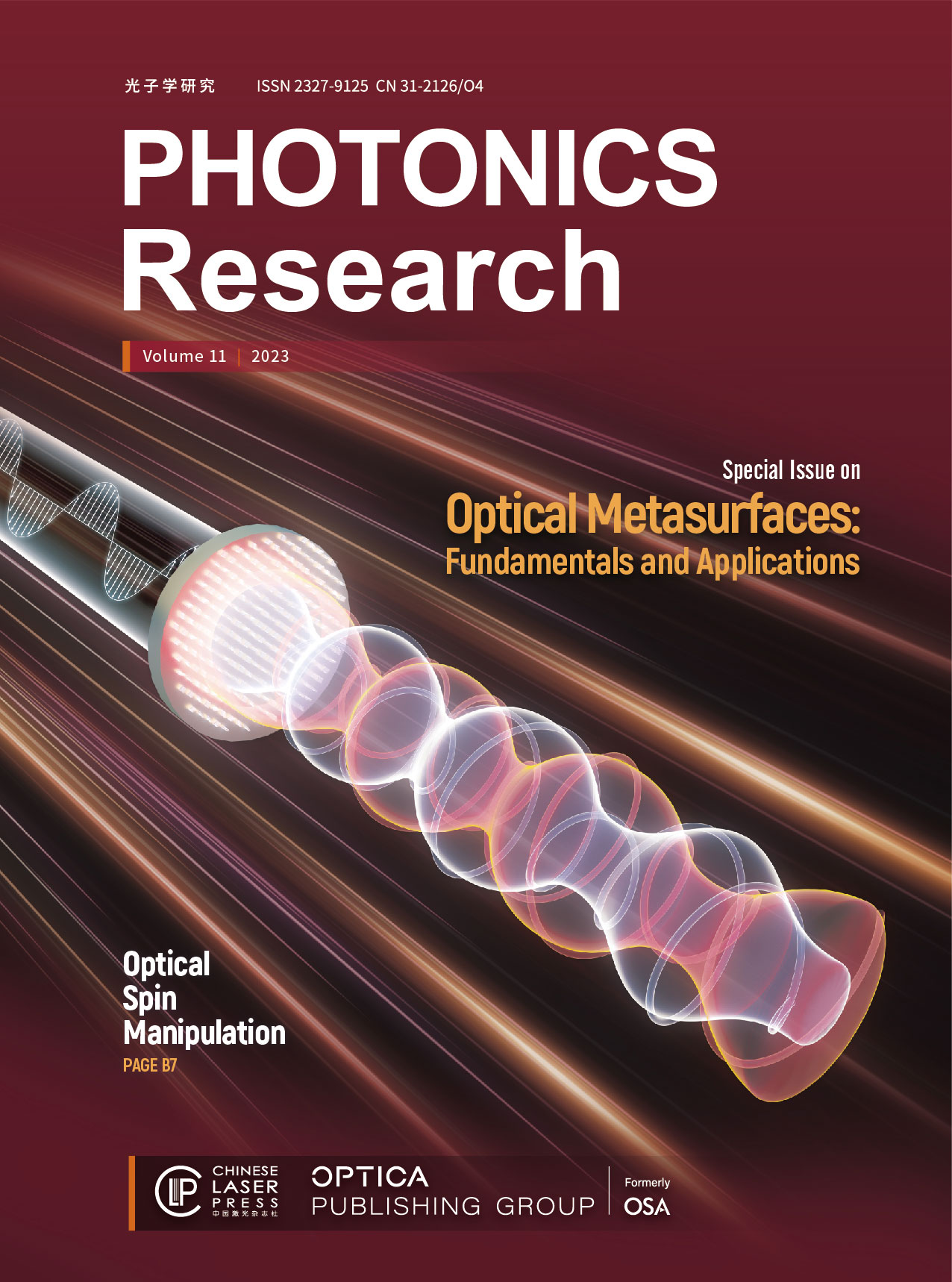光学边缘到螺杆奇异状态转换
IF 7.2
1区 物理与天体物理
Q1 OPTICS
引用次数: 0
摘要
光学奇点态对光在自由空间或光学介质中的传播特性有重大影响,从几何角度可分为螺旋型和边缘型。这些不同类型的奇异态之间没有直接联系,在没有外部扰动的情况下相互解耦。在这里,我们展示了一个新颖的光学过程,在这个过程中,最初嵌套在高斯光场传播中的高阶边缘奇异态逐渐转变为螺旋奇异态,其新生拓扑电荷由边缘态的阶数决定。所考虑的边缘状态包括带相反电荷的涡旋和反涡旋模式的等量叠加。我们通过引入内在的涡旋-反涡旋相互作用,从理论和实验上实现了这种边缘到螺杆的转换过程。我们还以高阶轨道波恩卡莱球为基础,提出了映射这一动力学过程的几何表示法。在这个框架内,从赤道到 Poincaré 球南北极的状态演变映射解释了边缘到螺杆的转换。我们的演示为利用涡旋与反涡旋的内在相互作用操纵奇点状态提供了一种新方法。所展示的现象还可以推广到其他波系统,如物质波、水波和声波。本文章由计算机程序翻译,如有差异,请以英文原文为准。
Optical edge-to-screw singularity state conversions
Optical singularity states, which significantly affect propagation properties of light in free space or optical medium, can be geometrically classified into screw and edge types. These different types of singularity states do not exhibit direct connection, being decoupled from each other in the absence of external perturbations. Here we demonstrate a novel optical process in which a higher-order edge singularity state initially nested in the propagating Gaussian light field gradually involves into a screw singularity with a new-born topological charge determined by order of the edge state. The considered edge state comprises an equal superposition of oppositely charged vortex and antivortex modes. We theoretically and experimentally realize this edge-to-screw conversion process by introducing intrinsic vortex–antivortex interaction. We also present a geometrical representation for mapping this dynamical process, based on the higher-order orbital Poincaré sphere. Within this framework, the edge-to-screw conversion is explained by a mapping of state evolution from the equator to the north or south pole of the Poincaré sphere. Our demonstration provides a novel approach for manipulating singularity state by the intrinsic vortex–antivortex interactions. The presented phenomenon can be also generalized to other wave systems such as matter wave, water wave, and acoustic wave.
求助全文
通过发布文献求助,成功后即可免费获取论文全文。
去求助
来源期刊

Photonics Research
OPTICS-
CiteScore
13.60
自引率
5.30%
发文量
1325
期刊介绍:
Photonics Research is a joint publishing effort of the OSA and Chinese Laser Press.It publishes fundamental and applied research progress in optics and photonics. Topics include, but are not limited to, lasers, LEDs and other light sources; fiber optics and optical communications; imaging, detectors and sensors; novel materials and engineered structures; optical data storage and displays; plasmonics; quantum optics; diffractive optics and guided optics; medical optics and biophotonics; ultraviolet and x-rays; terahertz technology.
 求助内容:
求助内容: 应助结果提醒方式:
应助结果提醒方式:


